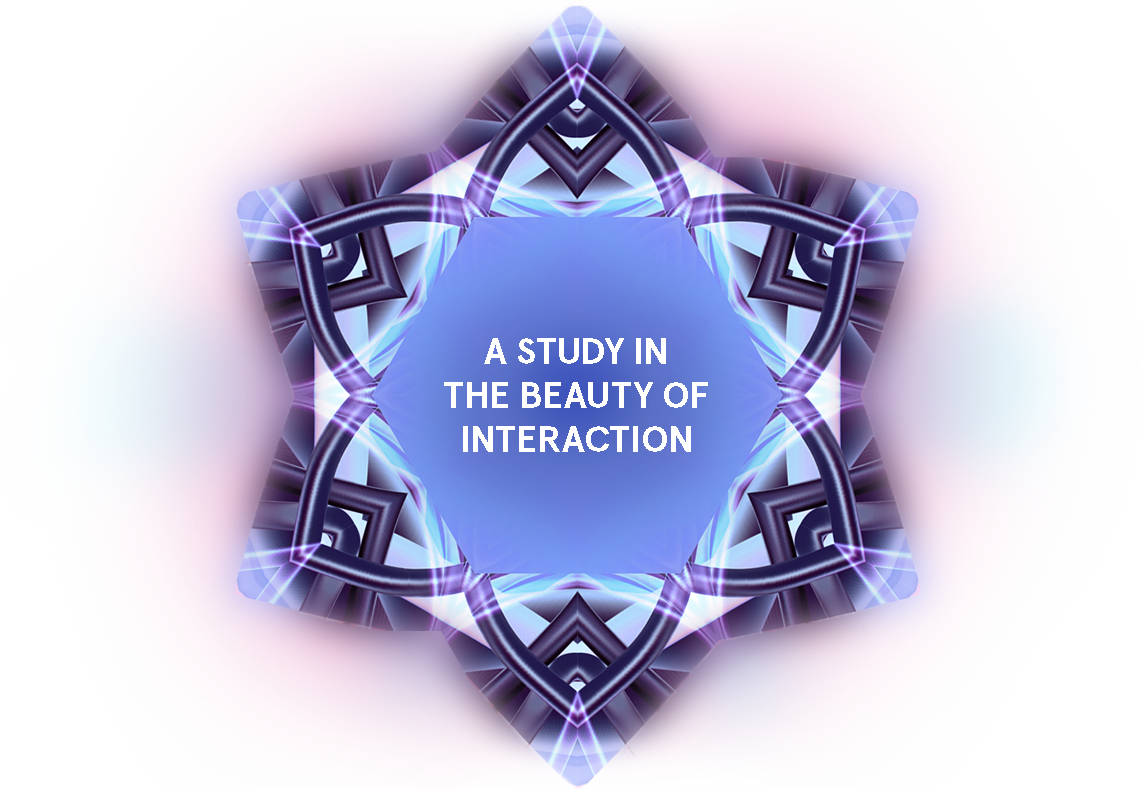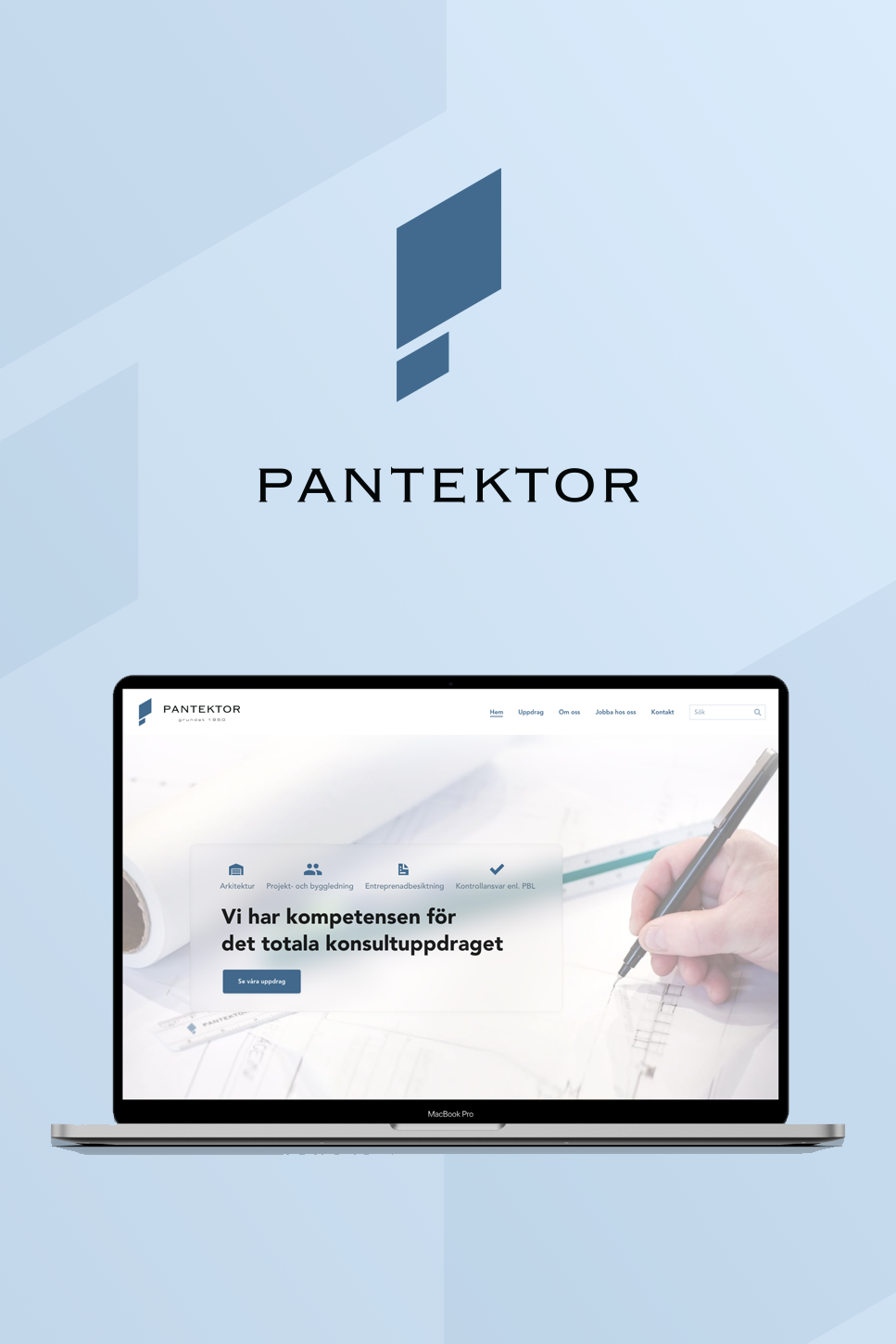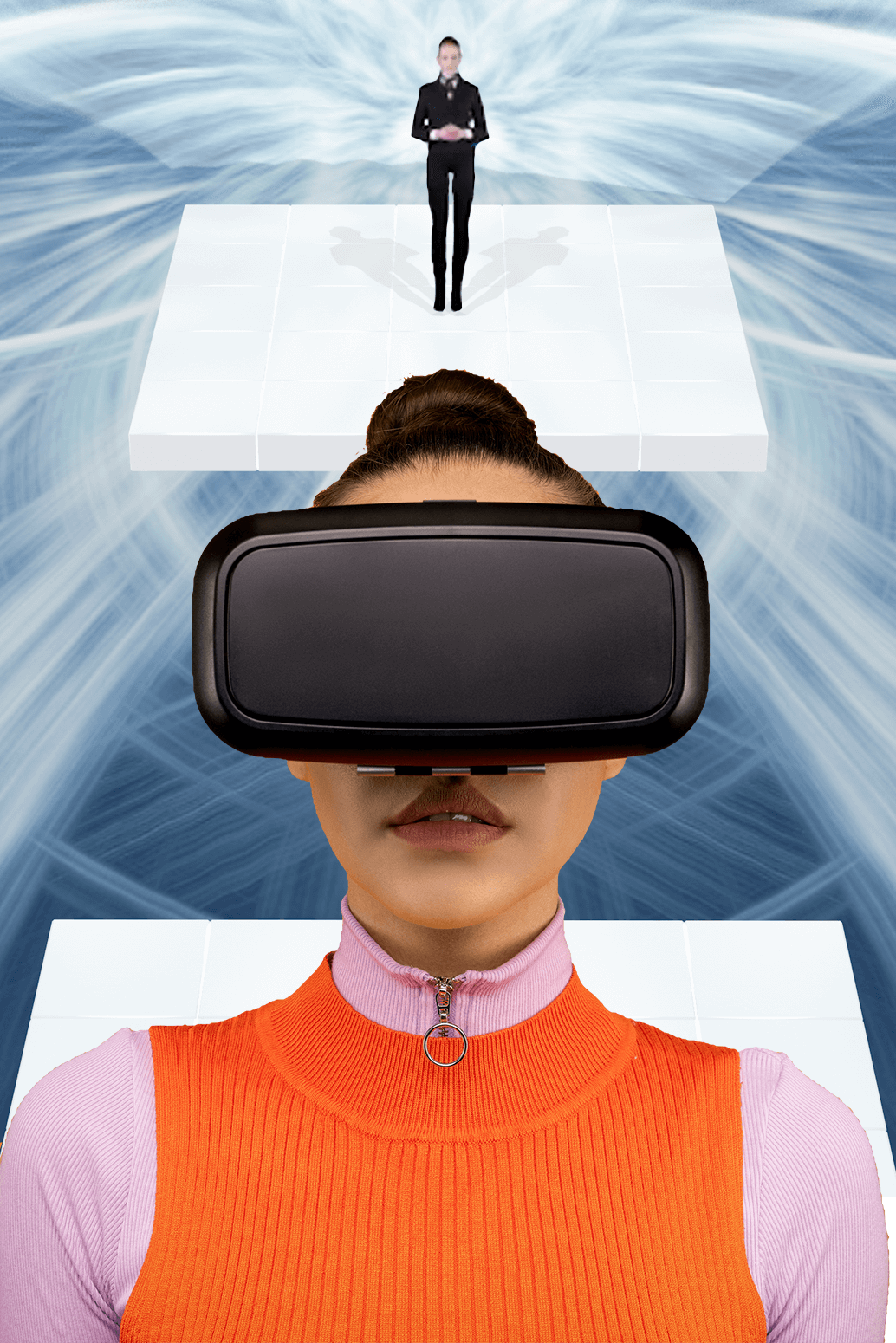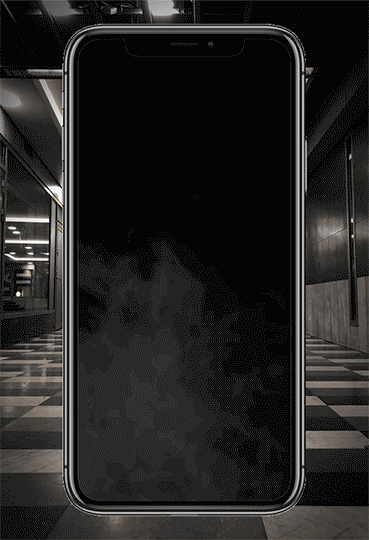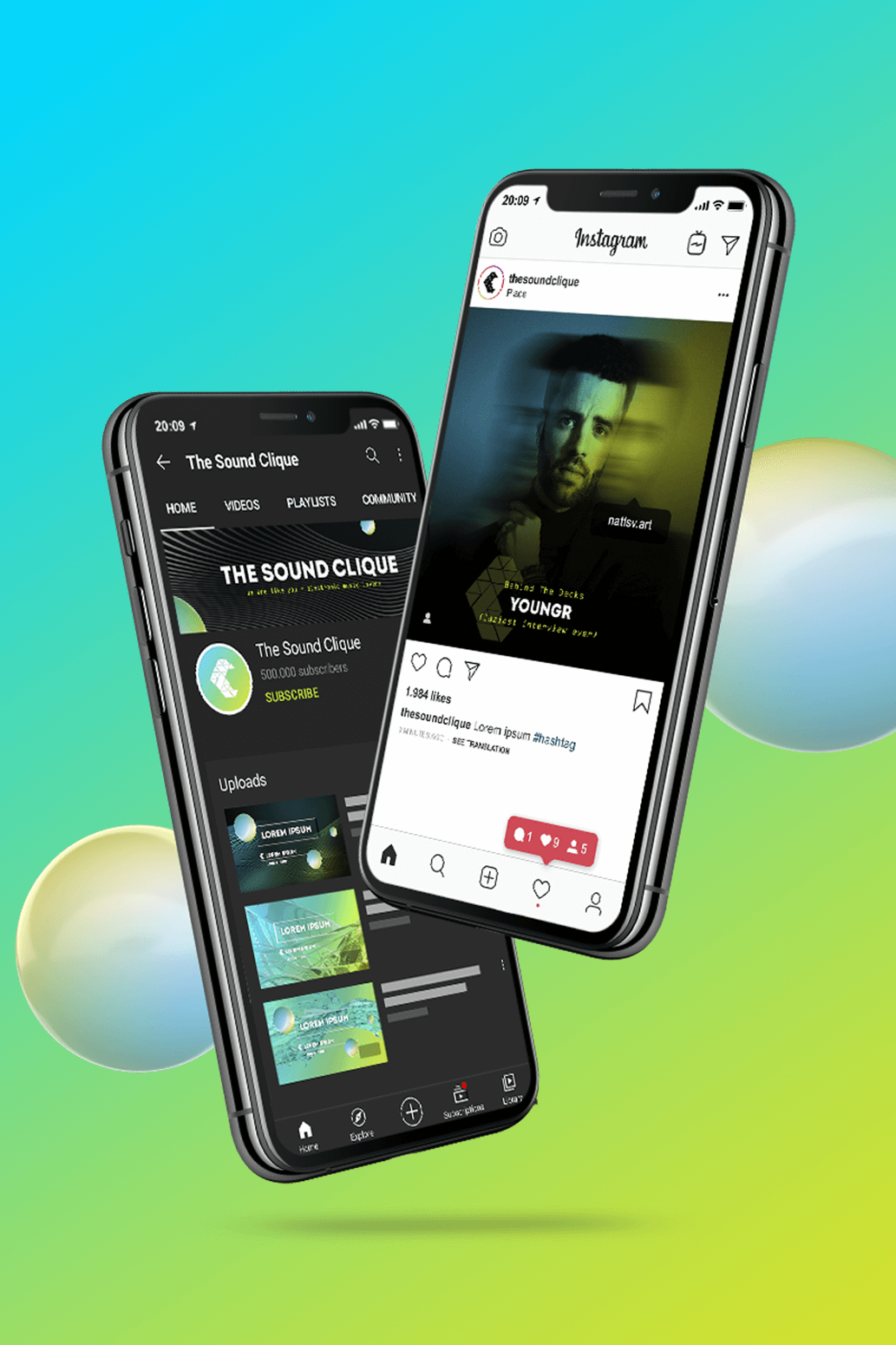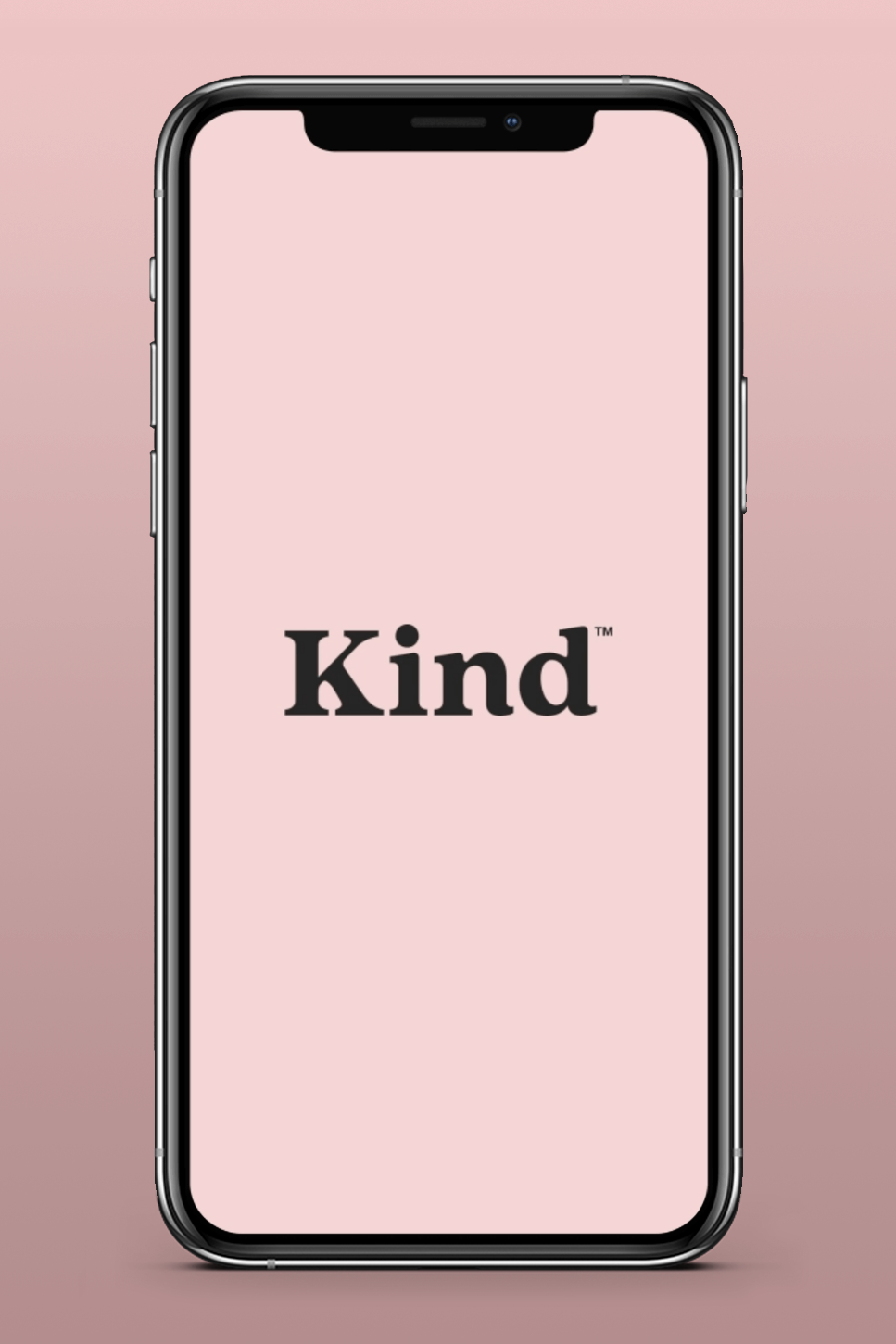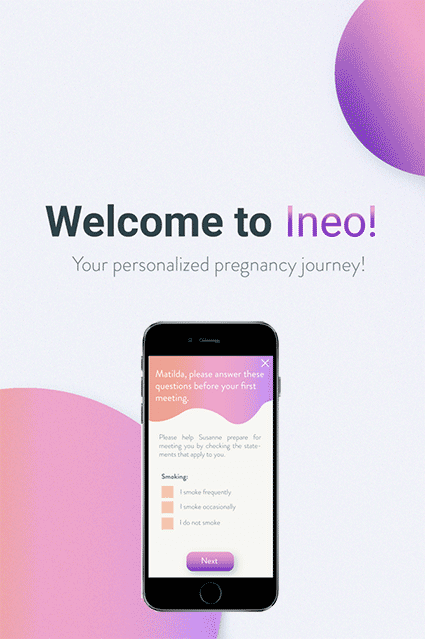Designing for pleasurable experiences
Pleasure can be perceived through all of our senses. As we access the digital world through physical means, it may be good as a designer to think of how the way people use physical interfaces affect the experience they get from digital media. Ultimately, what constitutes a "beautiful interaction"? Solar is an interactive artwork that explores interaction as a medium outside of screens. In response to input through a tactile interface, it projects interactive audio-visual elements in a room, letting the user have a conversation with an artwork perceived as an entity.
Brief: Create a platform for exploring relations between Interaction attributes and Pleasures in
multisensory interactive art
Target group: Interaction designers and interactive artists
Team: Nathalie Strindlund
Role: research, UX design, prototyping, audio-visual design, academic writing
Duration: 5 months
Methods/tools: Photoshop, Logic Pro X, HTML, CSS, JavaScript, Workshops, Interviews, Physical
material
(metal, fabric)
Solar was my degree project in Interaction Design at Malmö University and was graded with a VG (Pass with distinction). As a theoretical project, it was made to help interaction designers think more clearly around and make better design choices regarding interactions within interactive systems.

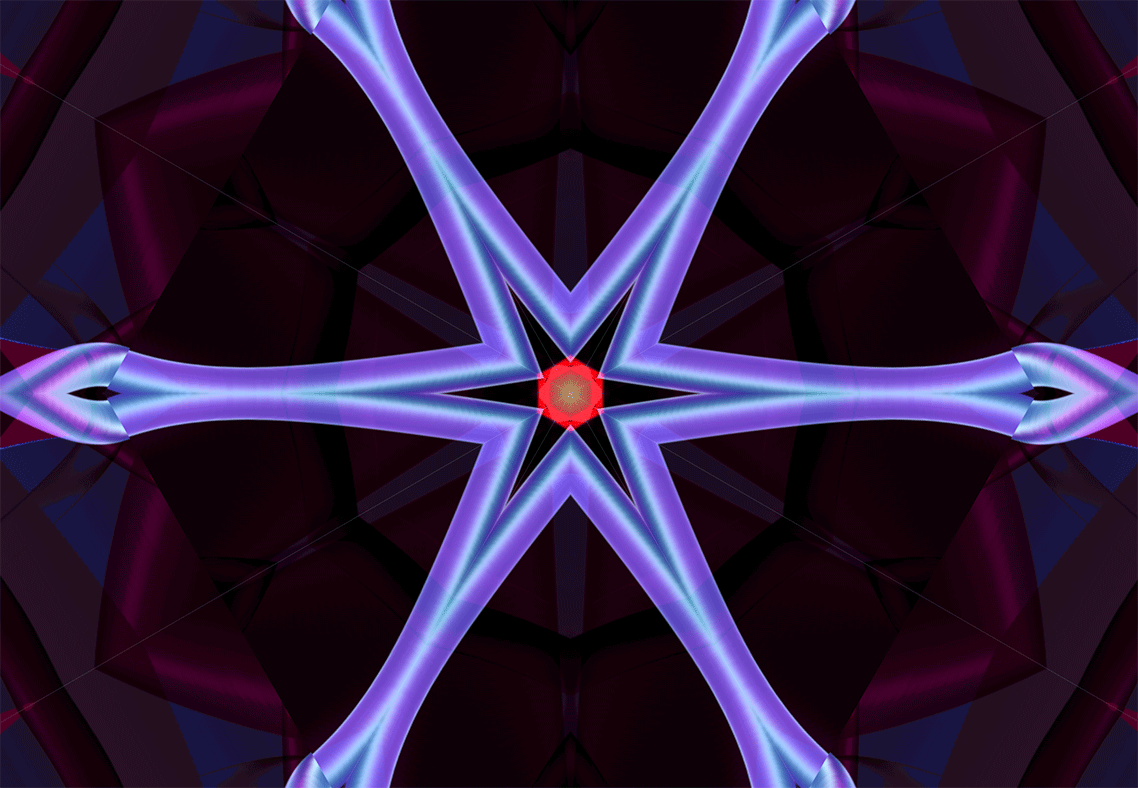
PLATFORM FOR RESEARCH
Through literature research, I found that the interest in designing interactive systems is going beyond their functionality and more towards their aesthetics. Even though UX is central to interaction design, research often fails to address how qualities of interactions can actually create pleasurable experiences. I saw the importance, yet the lack in current research, of considering temporal aspects when evaluating aesthetic experience in interactive art, which is why Solar explores interactions in both space and time.
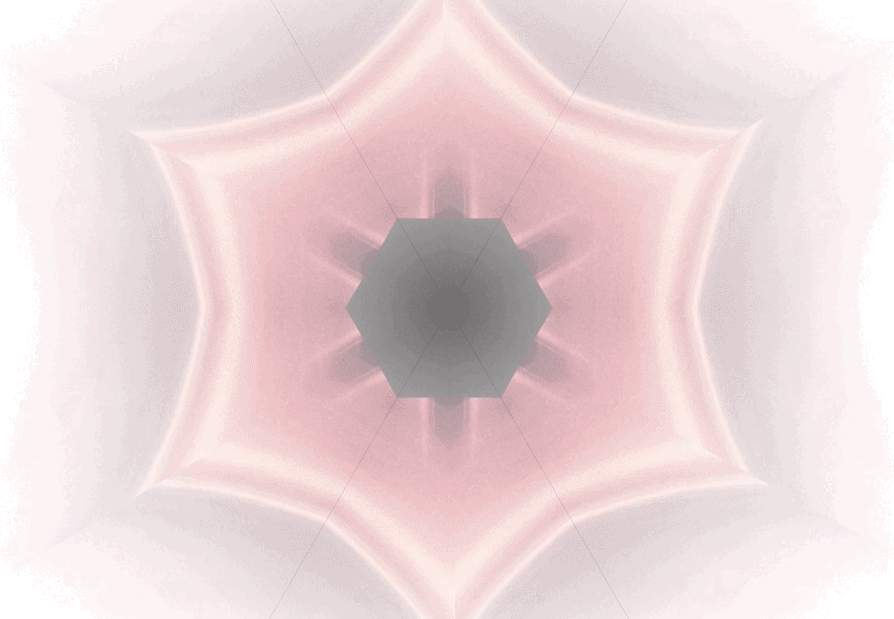
Solar communicates mystery and vitality with interactive visuals and sounds that inhibit the space in a room. Through evaluation sessions, I explored how changing certain qualities of the interaction (here called Interaction attributes) affected different kinds of pleasurable experiences (here called Pleasures) within the artwork. By analyzing data from interviews with participants after their encounter with Solar, patterns could be discovered of how Interaction attributes and Pleasures interrelated within it.
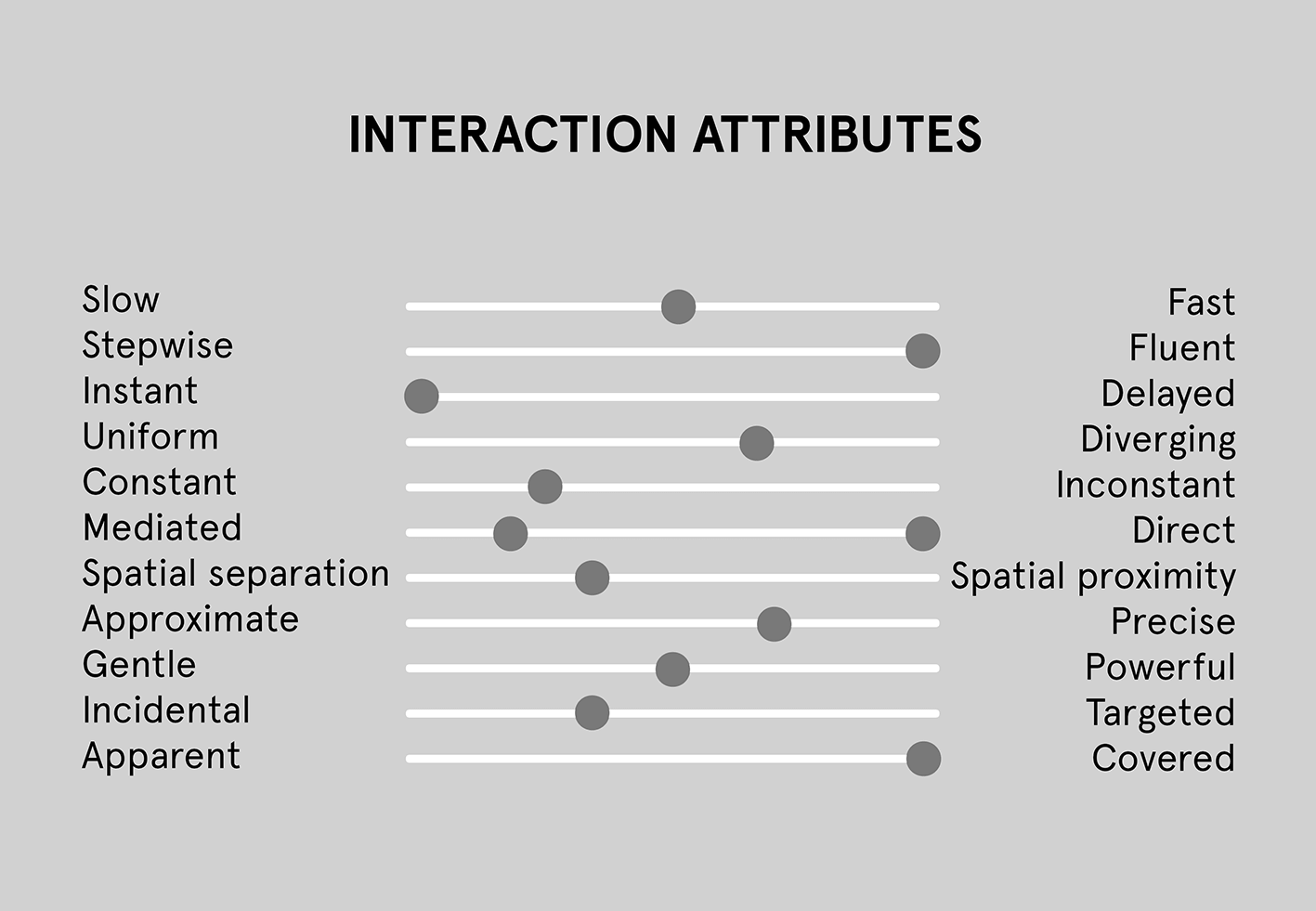
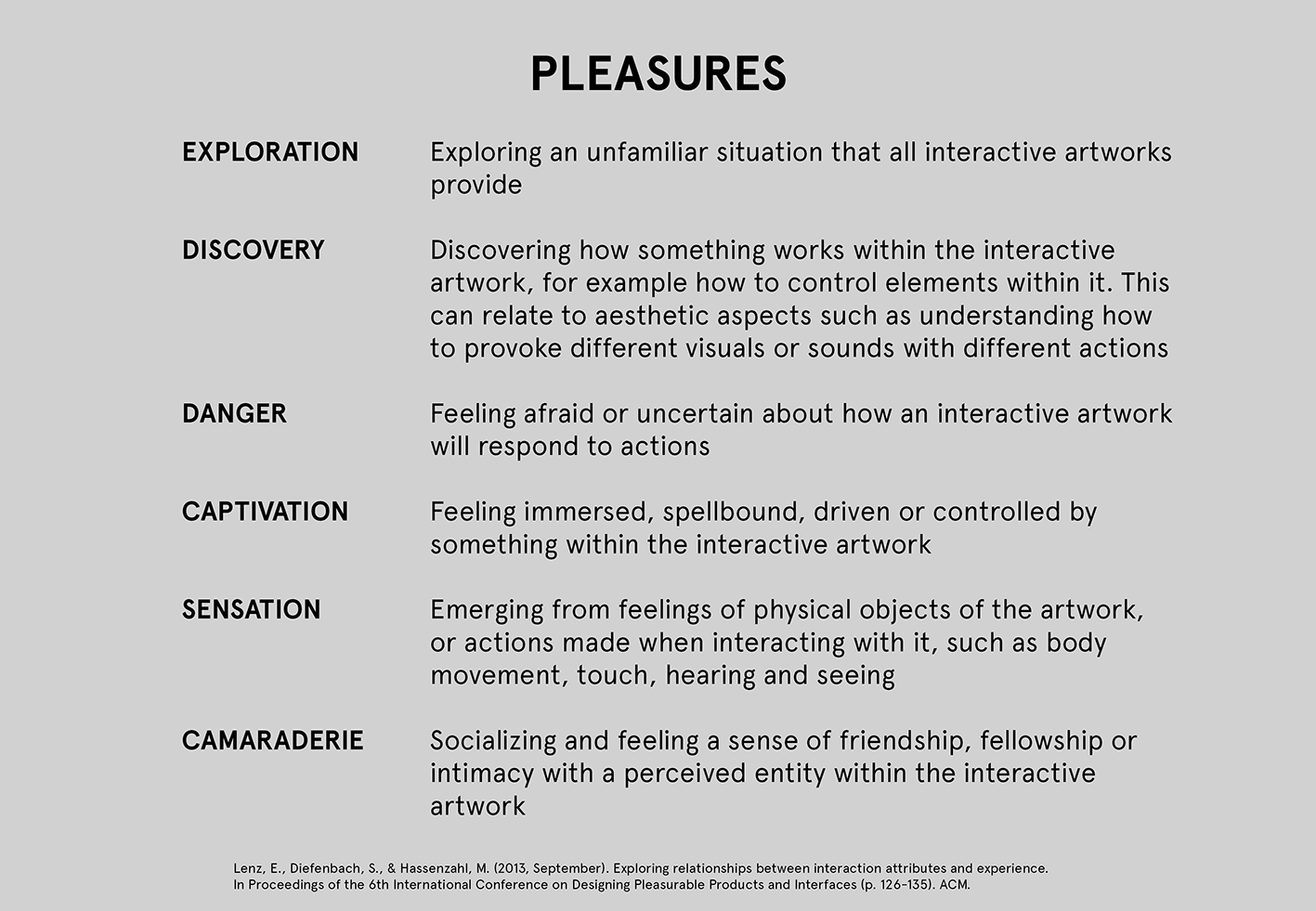
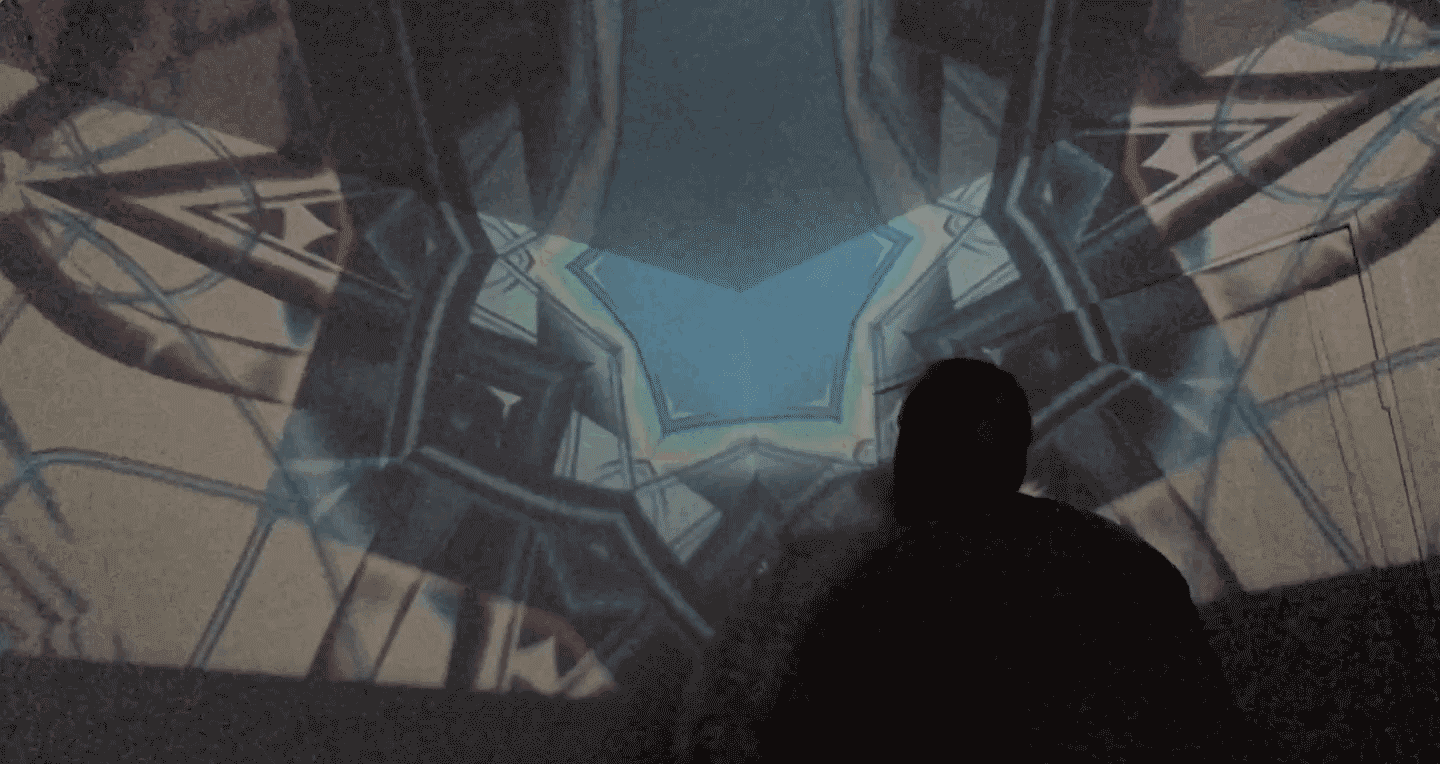
I identified a number of these patterns, as I call relations, and proposed a way of using this knowledge by locating where the relations existed within the artwork as well as showing how the Pleasures could be experienced over time. With this attempt to concretisize the complexity of aesthetics in interaction, I wanted to make it easier to understand what specific element of the artwork to tweak to achieve a desired user experience within it.
DESIGN PROCESS
For this project, we were encouraged to work with something we find personally interesting. Initially, I wanted to explore how interaction as a medium could facilitate the feeling of having a social relationship with an artwork perceived as a character. A big inspiration for this was the concept of how aliens are typically portrayed in movies; intriguing and exciting yet a bit intimidating because you don´t know what they are capable of. An artwork I think is touching upon this is ANIMA II by Nick Verstrand, which explores the relationship between the user and the machine through interactive audio-visual expressions in a mystical setting.
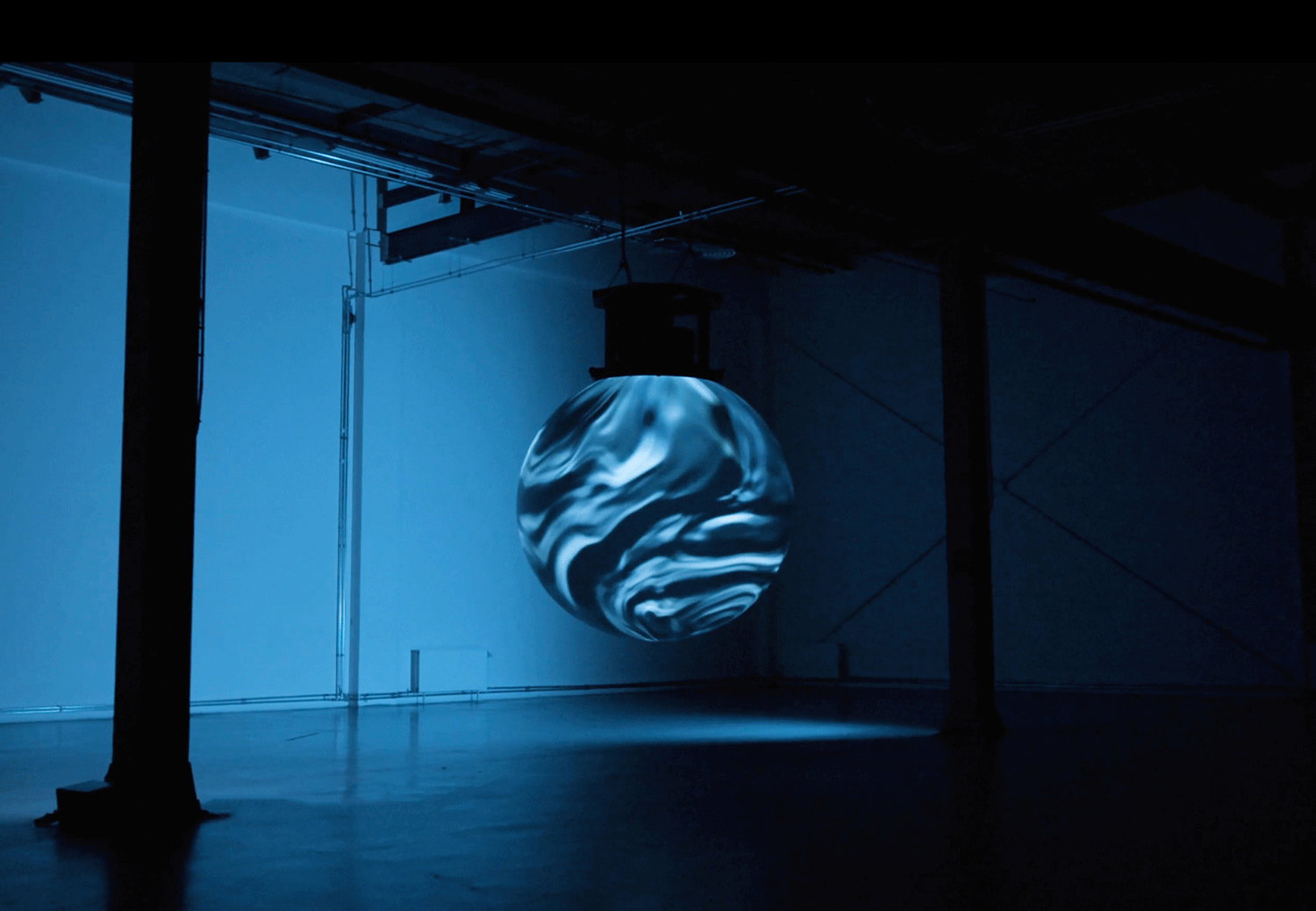
Anima from Nick Verstrand
However, as I found very little academic research on this it was difficult to find an effective way of continuing in that direction. The choice was then made to explore pleasurable experiences in a broader sense and how interactions can create different kinds of Pleasures in multisensory interactive art. I understood that a heavy theoretical approach would be necessary to understand my topic due to the ambiguity in areas such as aesthetics and experience. The deisgn process was a parallel process between theoretical and practical work to always read literature relevant for the element I was working on and to see where knowledge was needed to progress within the project.
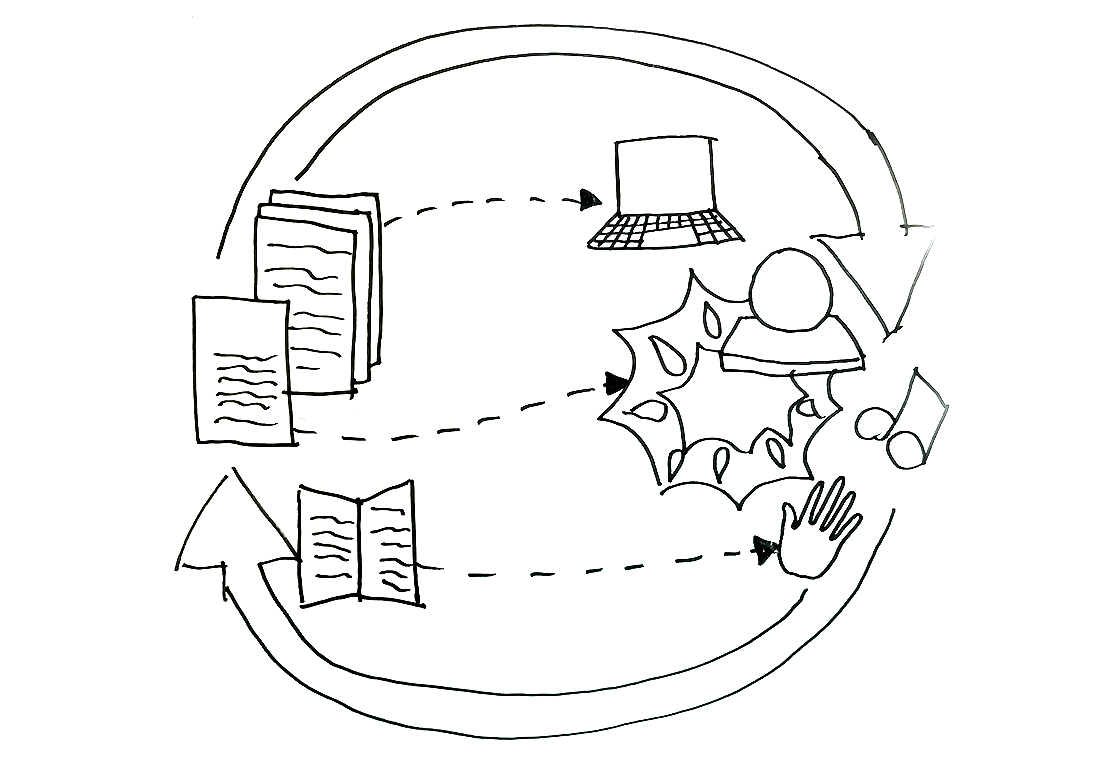
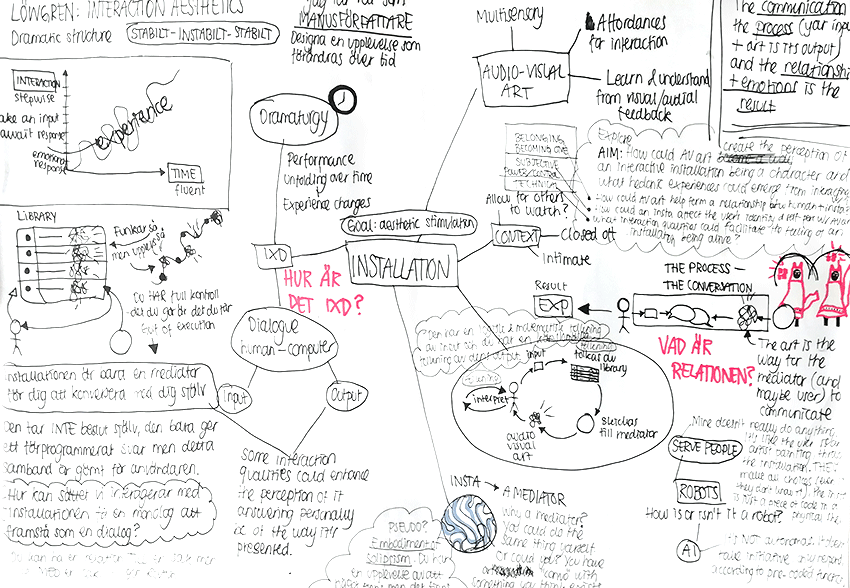
Two frameworks were used to identify and differentiate certain interactions and experiences from each other; Lenz, Diefenbach, & Hassenzahl's (2013) Interaction Vocabulary as well as Costello's (2009) 13 Pleasure Categories of Play.
Workshop
From theory, it was evident that experience emerges from interaction and that the physical attributes of things can give hints about how to interact with them. Based on this, I conducted a workshop to gain inspiration for the controls within Solar to match my envisioned concept. The participants were asked to make art with different techniques and also identify physical attributes of objects by, blindfolded, examining them with their hands. Following this, we discussed what interactions the objects afforded and what types of pleasures they experienced.

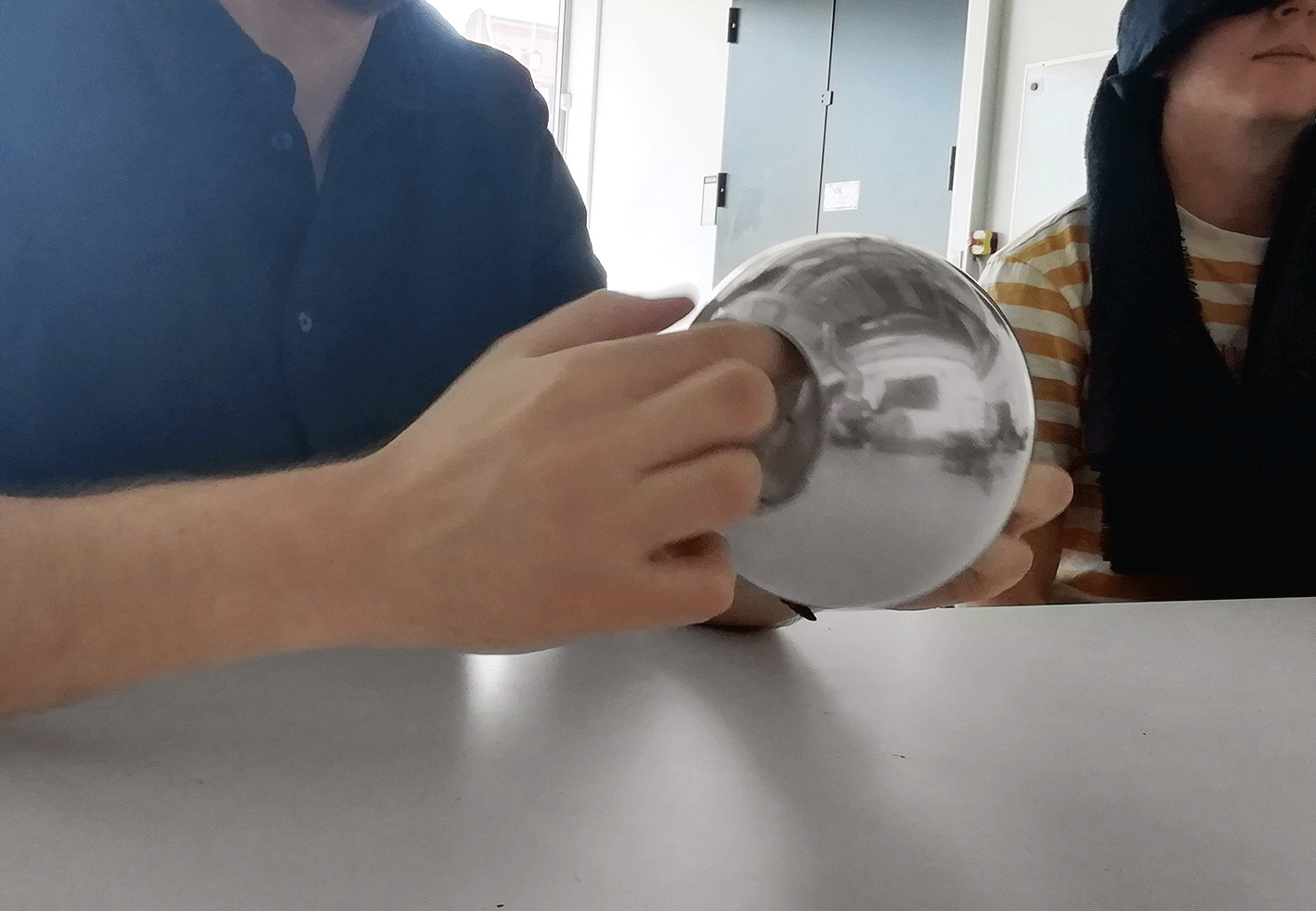
Having less
precision of a tool made the participants more
explorative in the creation of
art
The longer time it took to identify an object, the higher was the level of exploration in interaction
Tactile attributes of objects greatly affected how they were interacted with
Interaction
Based on the findings from the workshop, I planned the interaction within Solar. I focused on achieving playful behaviour with exploration because that is one way of engaging users in interactive art to experience the Pleasures. I also made a drawing on how I expected the experience of the interaction to unfold over time.
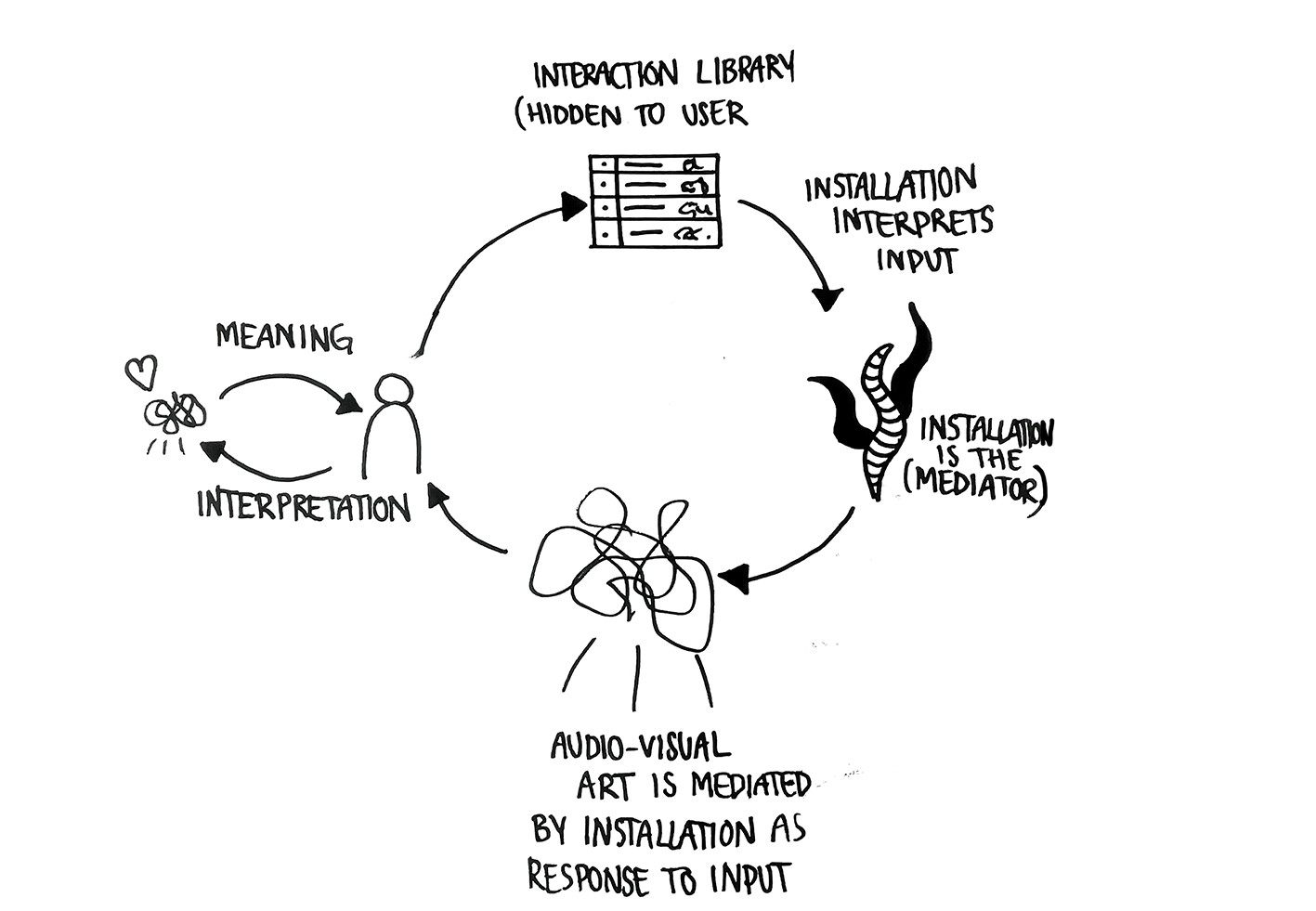
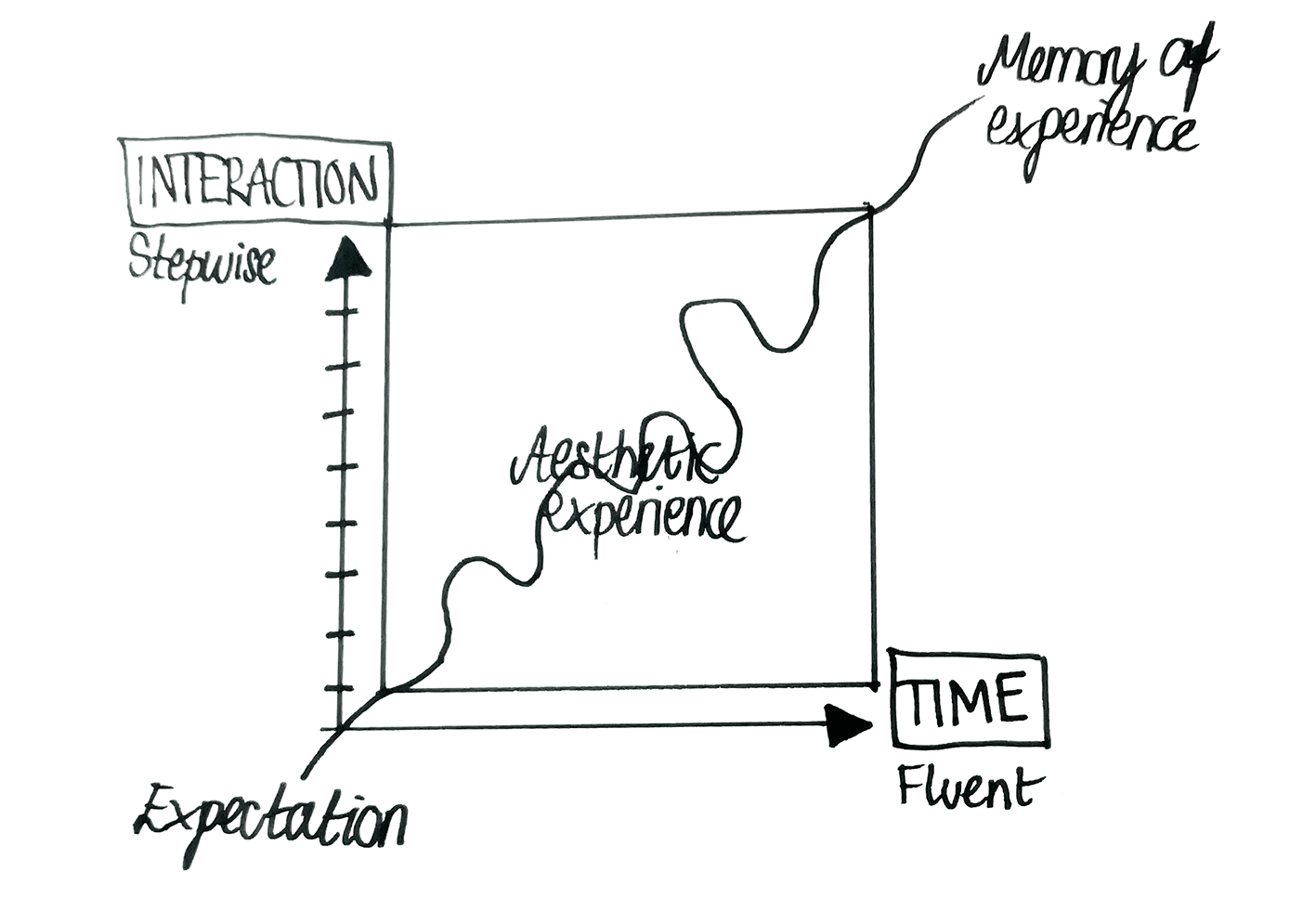
Lastly, I combined these two sketches in a model of the intended interaction with Solar to match my envisioned concept as well as give me a hint about what components would be necessary to implement within the artwork.
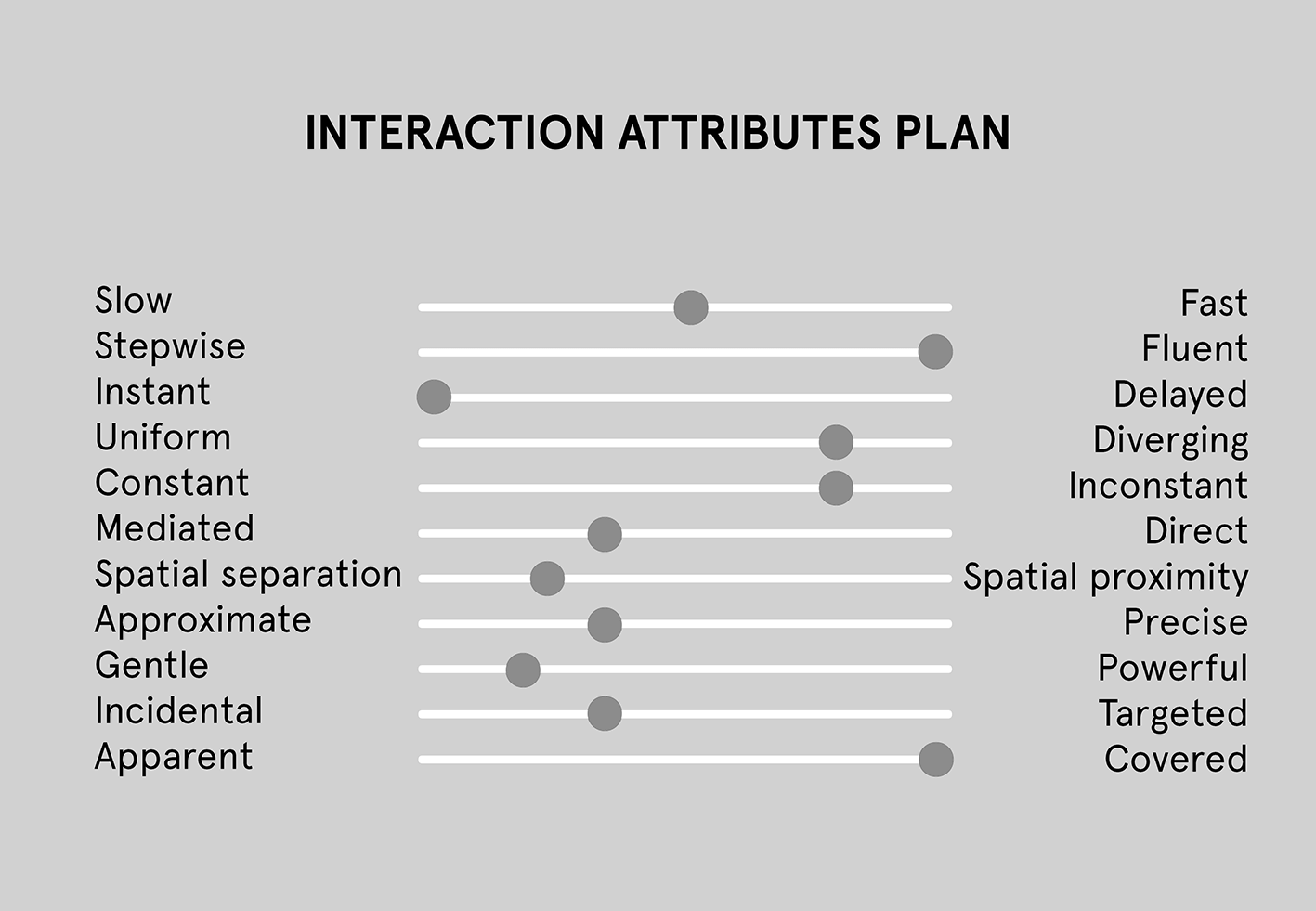
Prototyping
Based on the notion that appearance, texture and sound constitute interaction designers´ toolkit, I chose to include interactive elements that were visual, tactile and audial. As I wanted a fluent interaction with an instant reaction while keeping the mystic I was inspired by from ANIMA II, I came up with the idea of making an abstract interactive kaleidoscope that was controlled through a tangible interface.
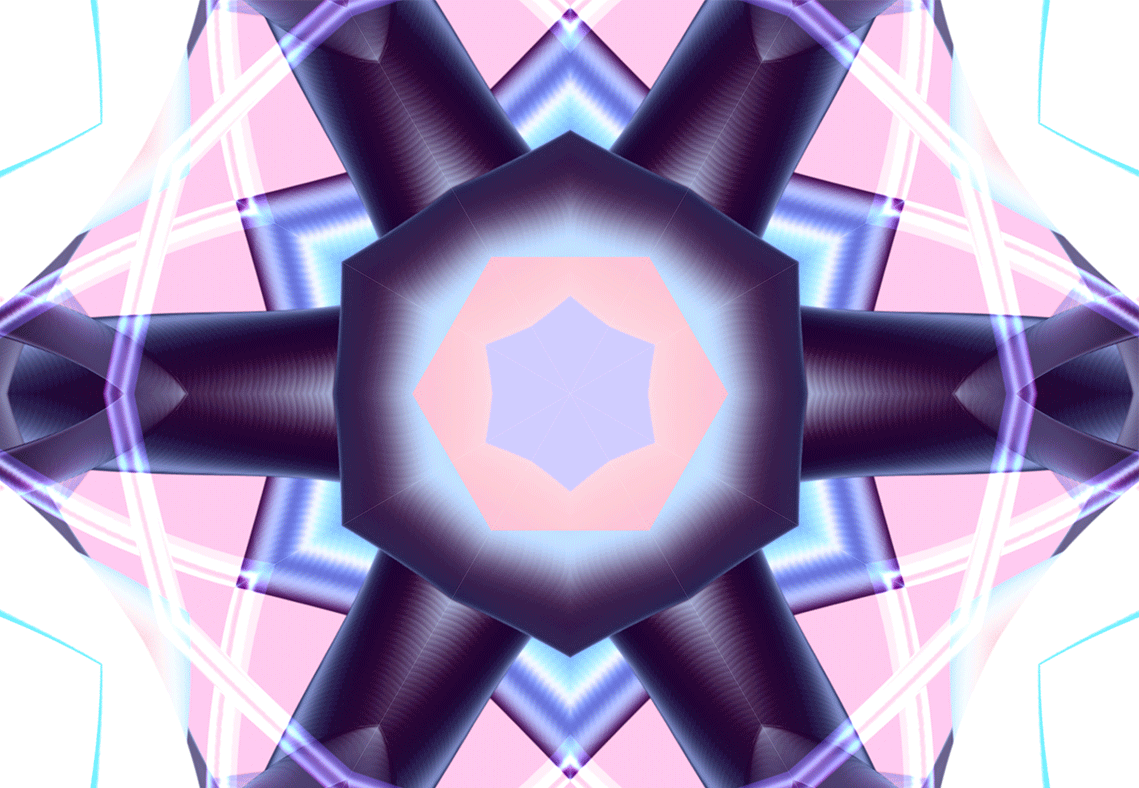
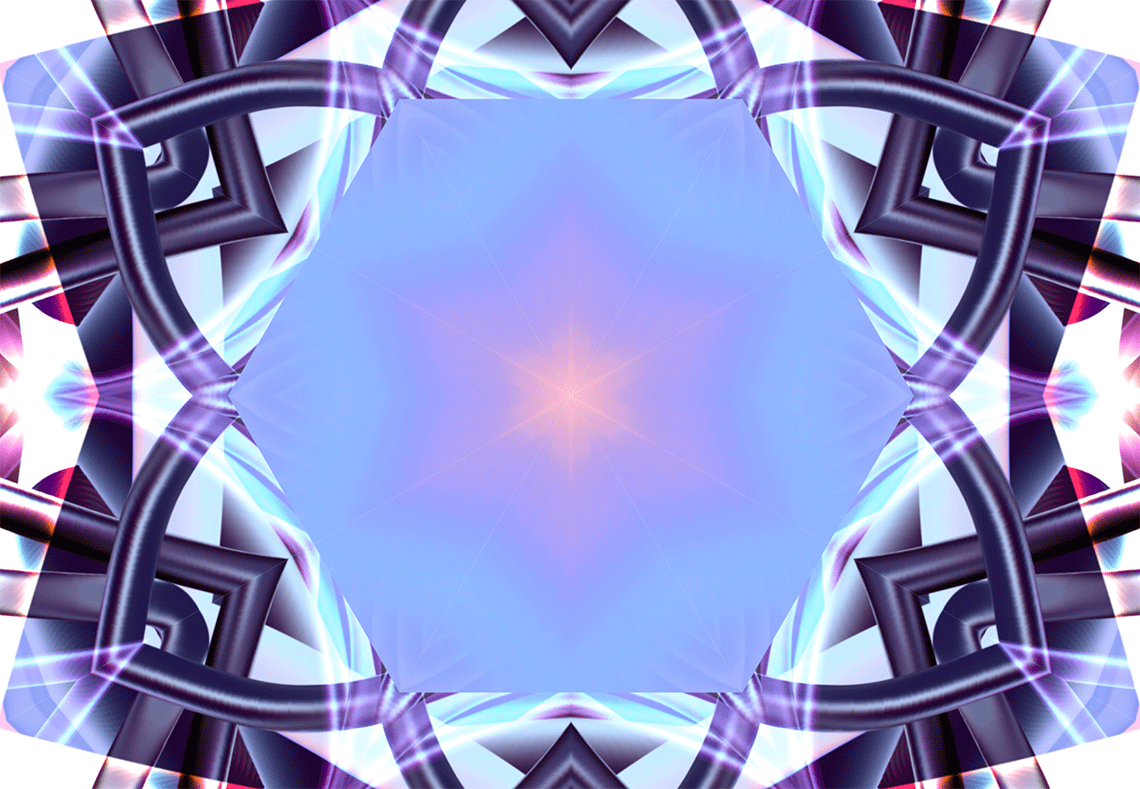
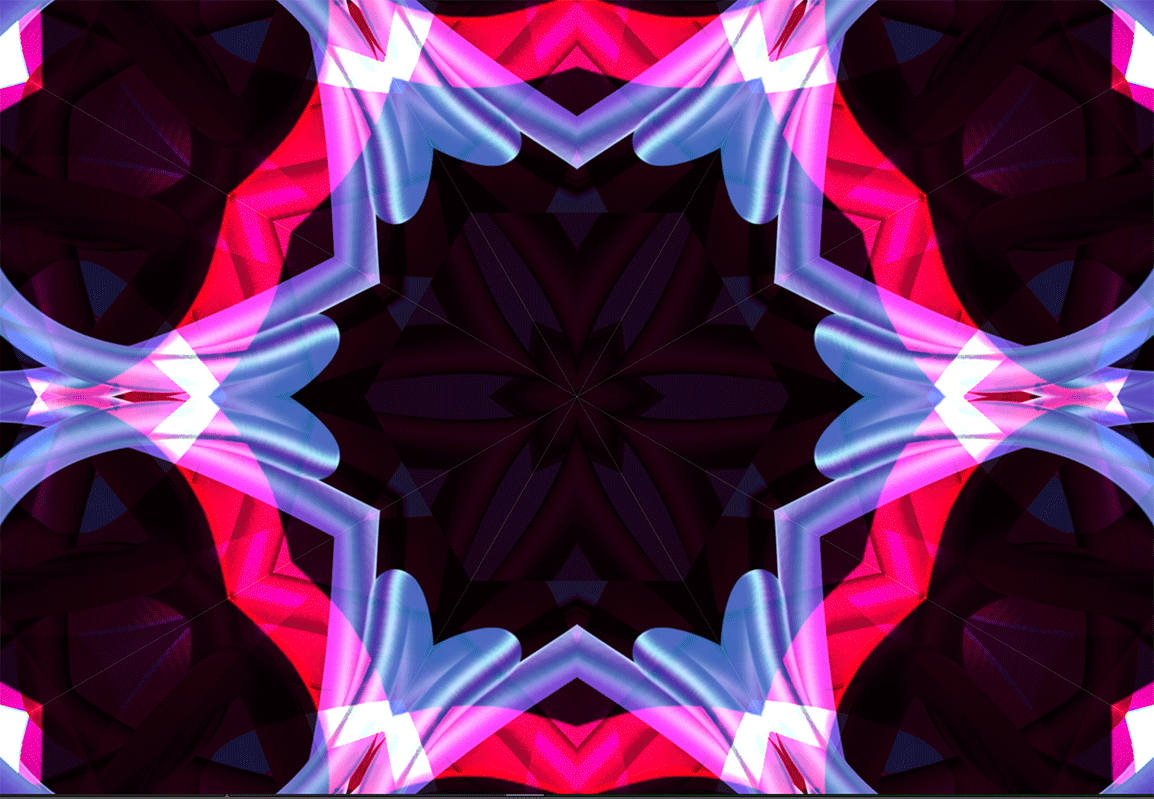
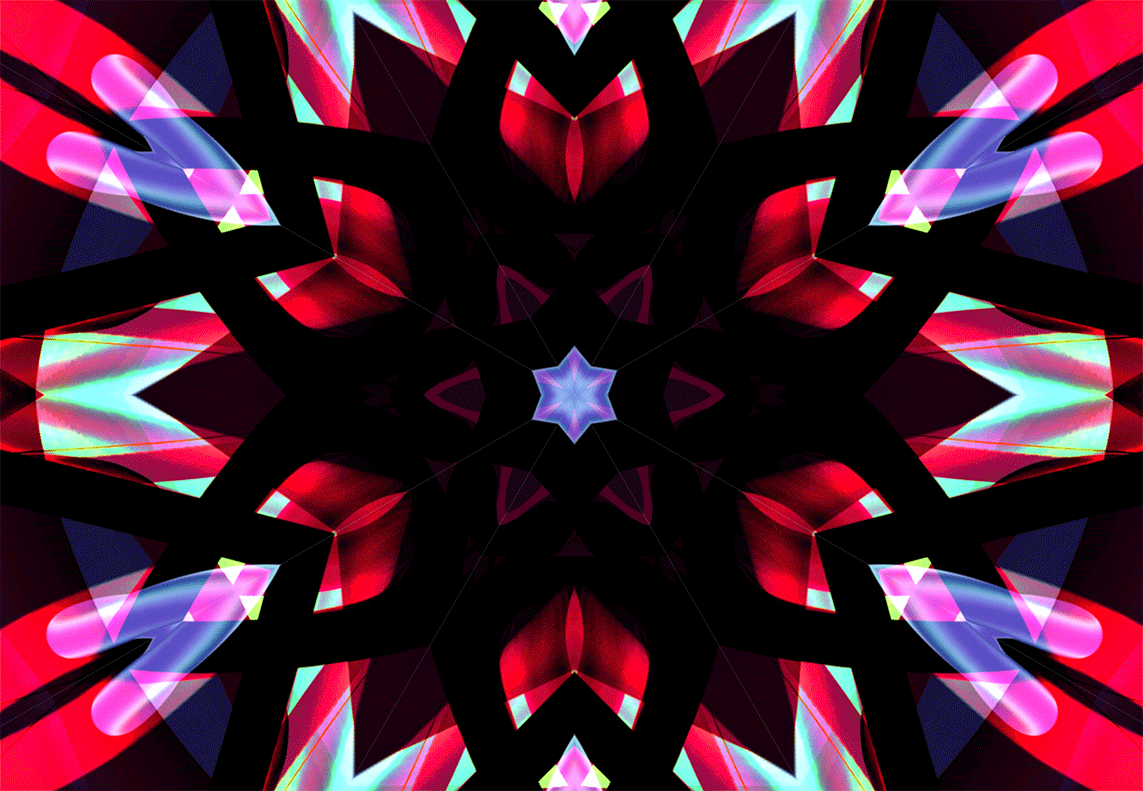
I created images in Photoshop that I then animated with CSS. The original images were digitally painted with various colors and shapes to create captivating patterns.
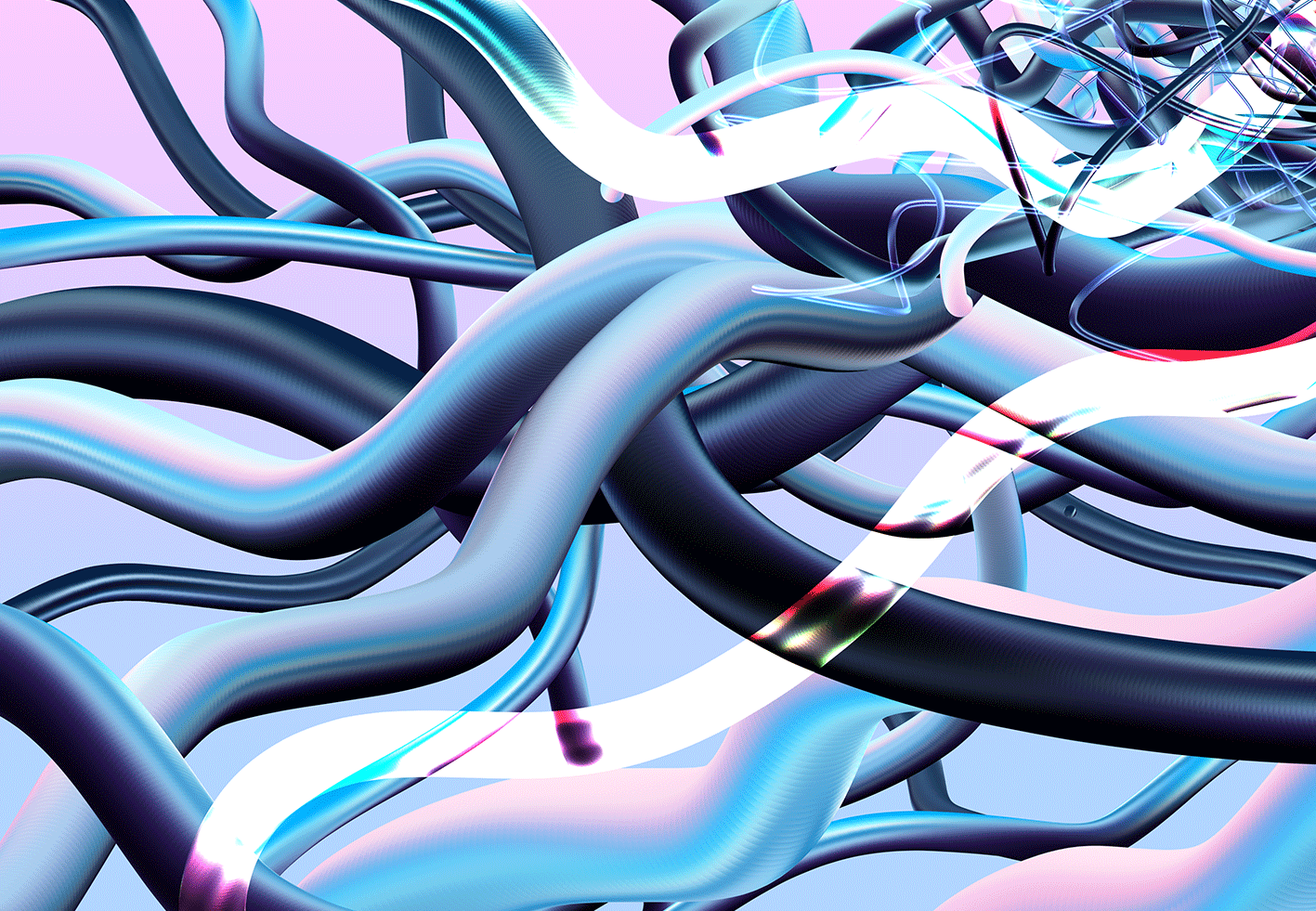
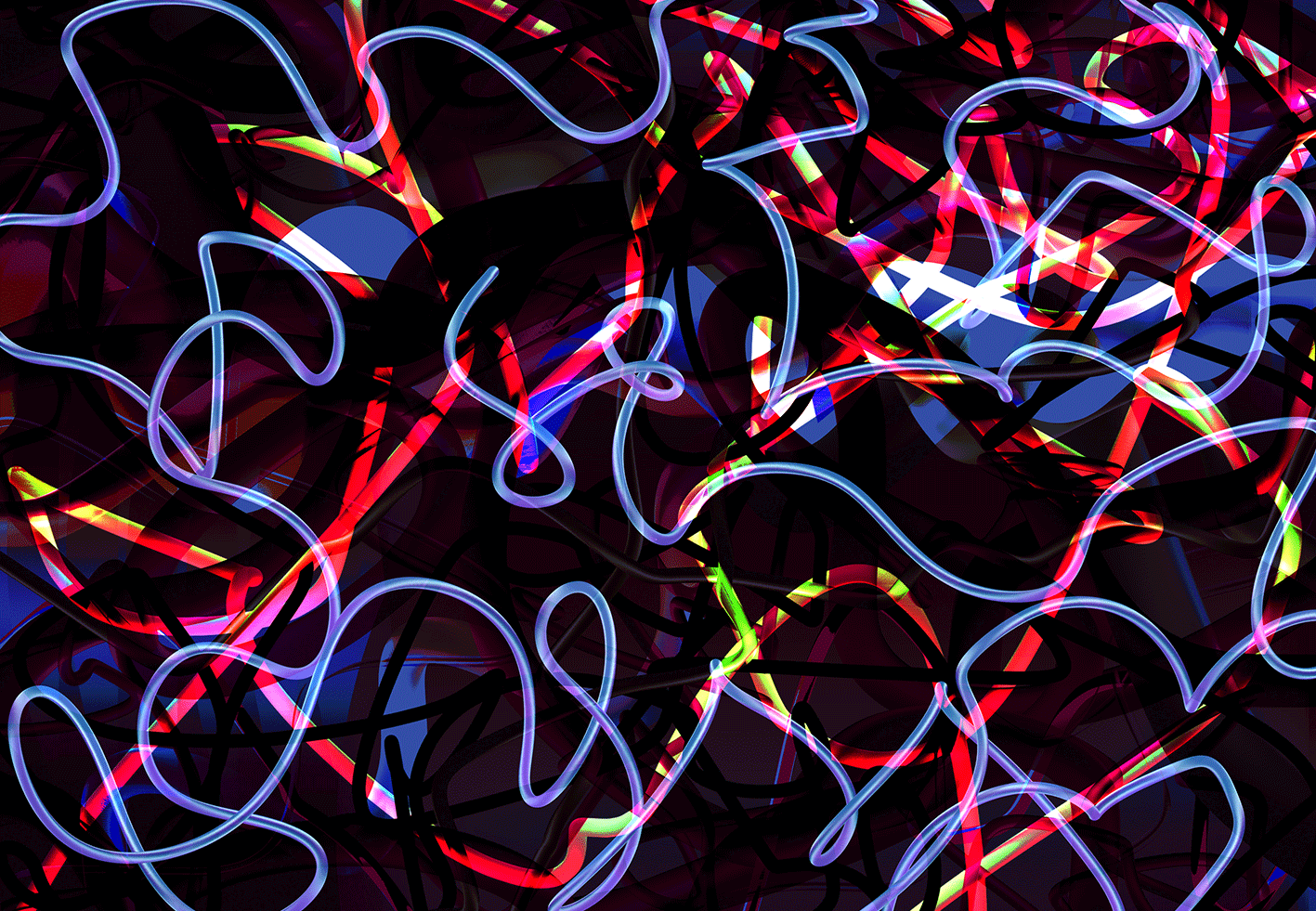
When implementing the functionality, I tried many different ways of making an input to the system, most of which required coding skills that I do not acquire. As I damned myself for wasting time on things too complicated for my ability, I realized that I had to think about how to make the technical implementation as simple as possible while causing an effect as dramatic as possible. I considered that to be translating the position of the cursor on the screen to the volume and position of the audio-visual elements, and doing that over a surface big enough to make you feel surrounded by it.
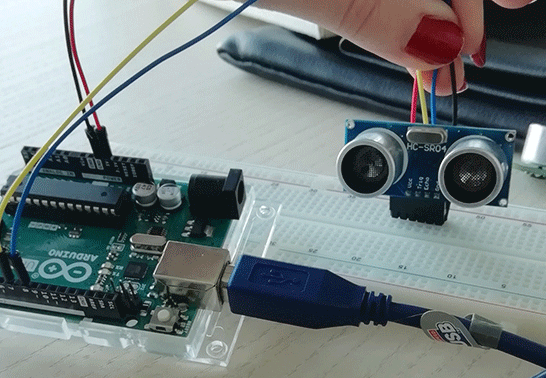
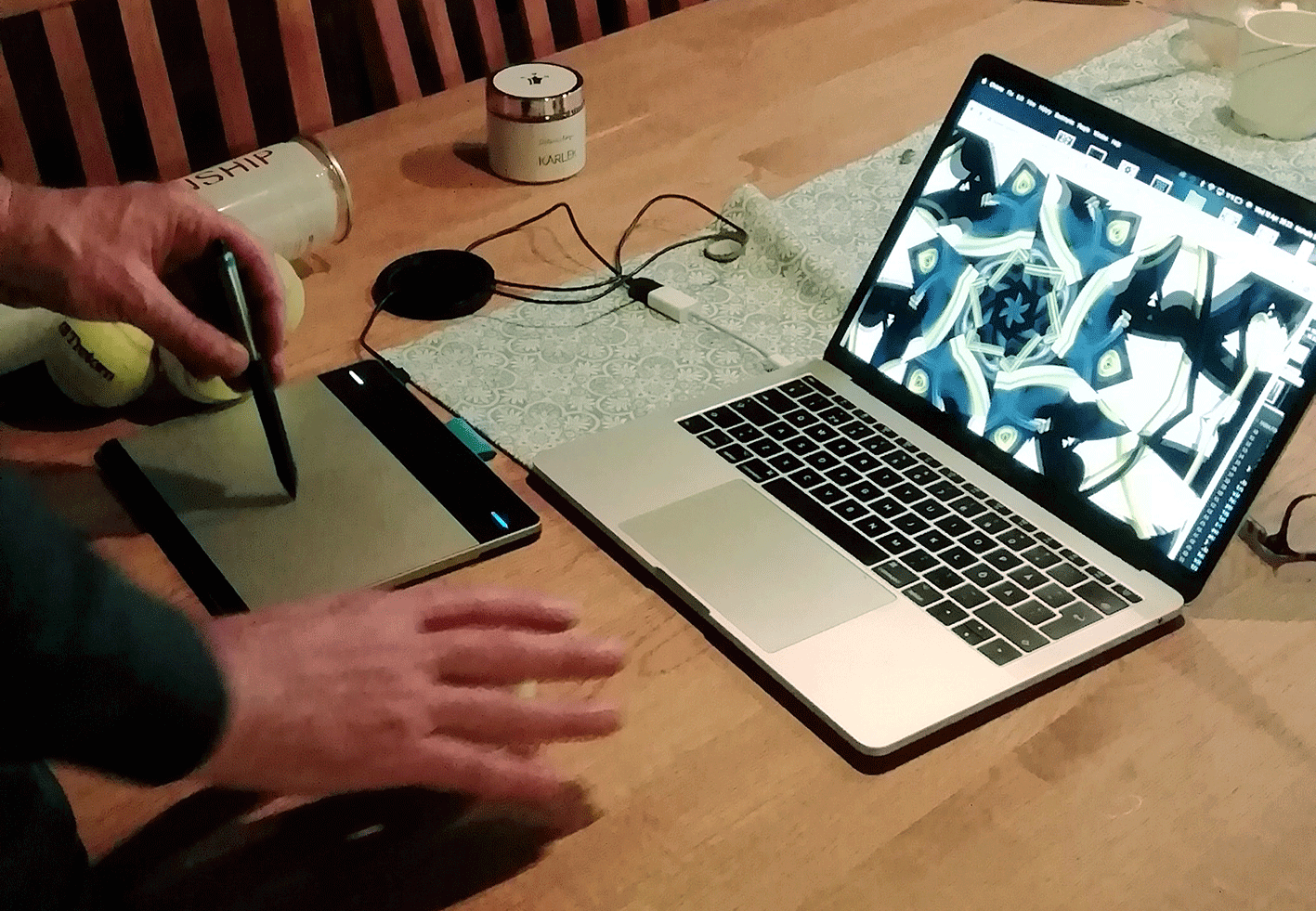
I then started playing around with physical objects in combination with a computer mouse. I decided to go for a heavy silver sphere which in the workshop was described as “feeling almost magical to the touch” as this fitted my vision for the concept. I could then animate the audio-visual output with the position of the cursor but with an input more interesting than just the computer mouse. Findings from the workshop also led to the decisions of projecting the visuals in the room and building a physical artefact that would contain the controller itself as well as a speaker.
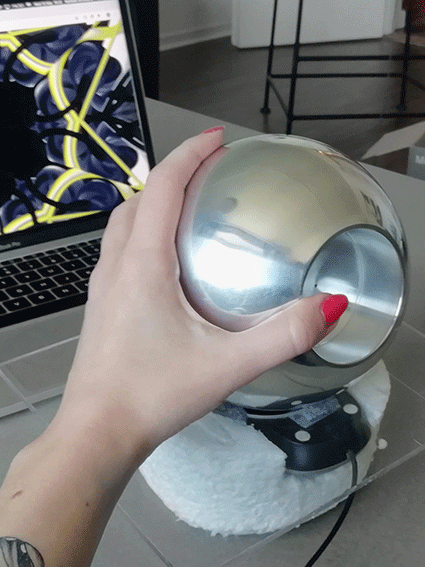
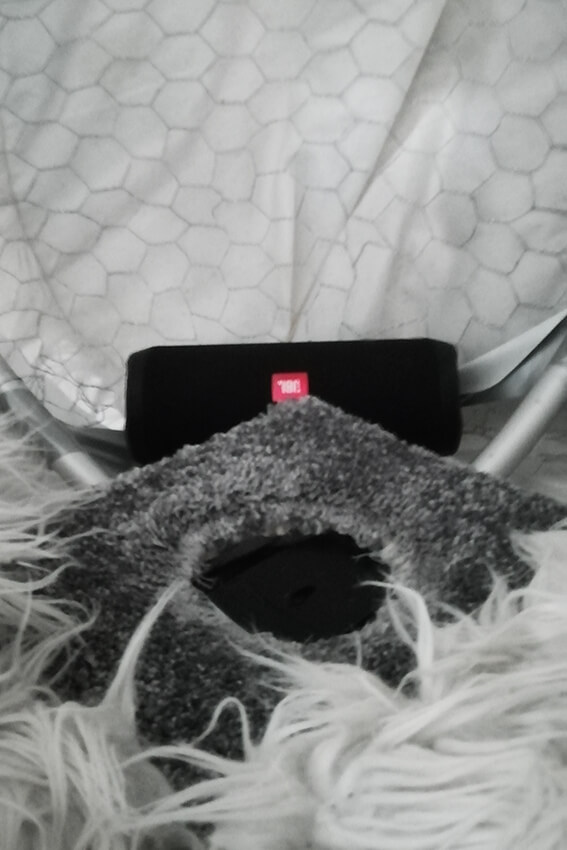
The audial elements were individually triggered when hovering over a specific transparent div-element on the screen that were placed on top of the visual elements according to the sketch below. The sounds were created with Logic Pro X.
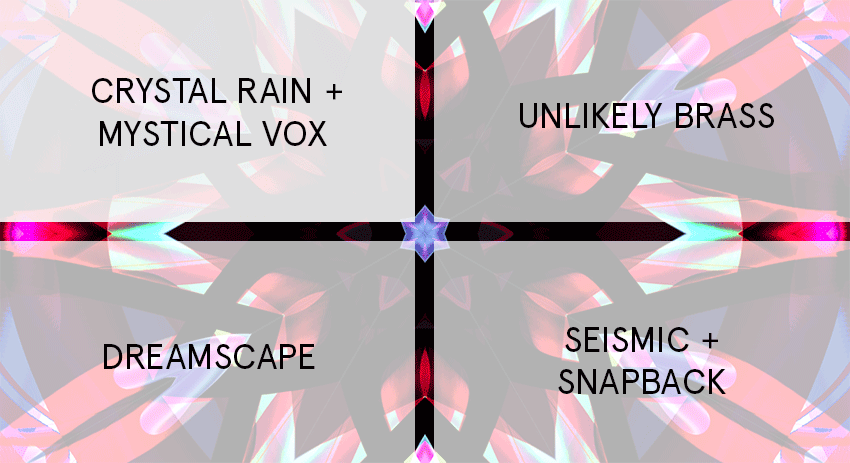
Evaluation
When Solar was finalized, I conducted evaluation sessions to identify what Pleasures were experienced within the artwork, and why. During the sessions I made some technical tweaks of the Interaction attributes to see how the Pleasures changed. A video-cued recall method was used to gather data without disturbing the participants and interviewed them afterwards about their experience. From these sessions, it was evident that six specific Pleasures were the most prominent within Solar, which were then analyzed individually.
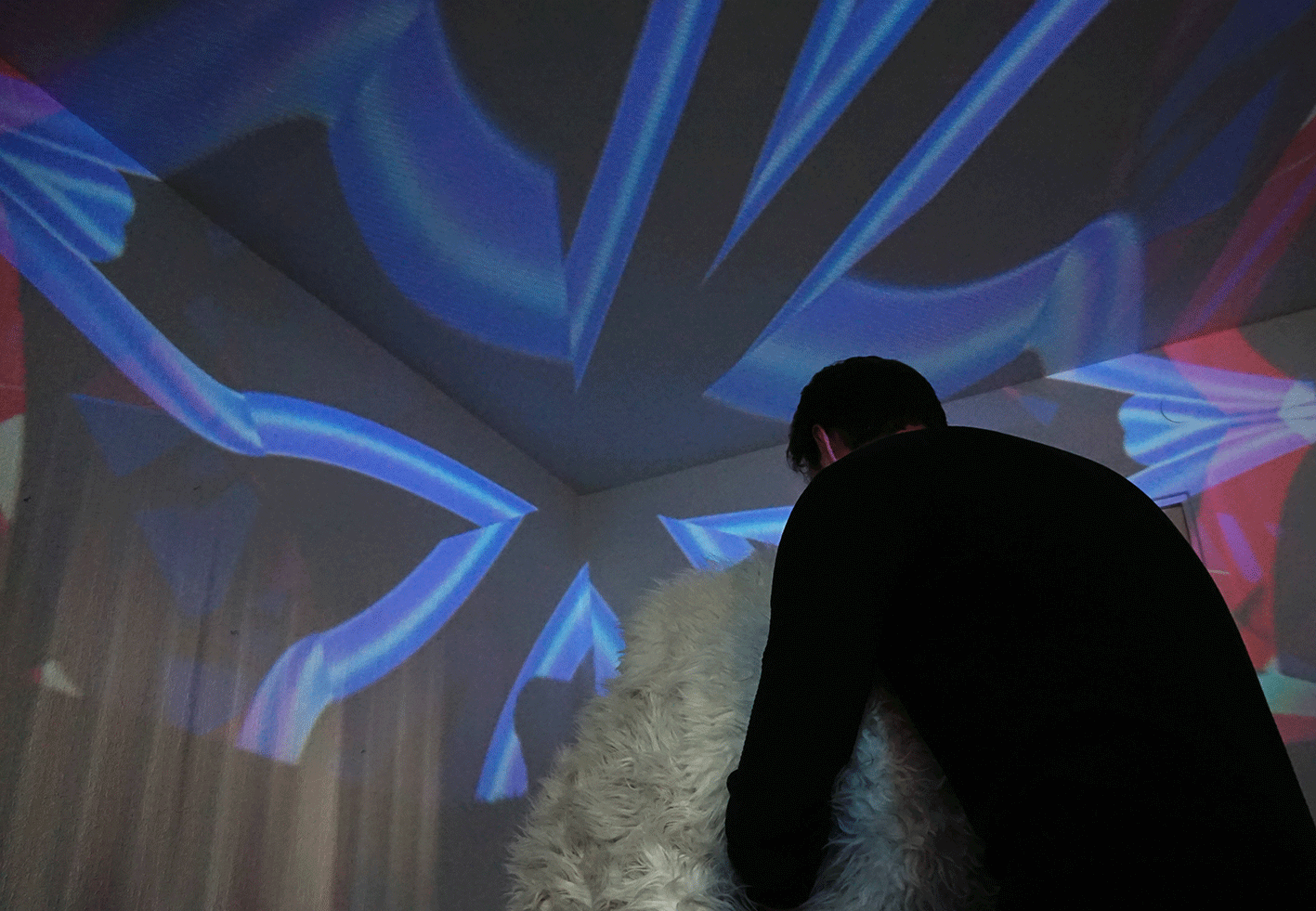
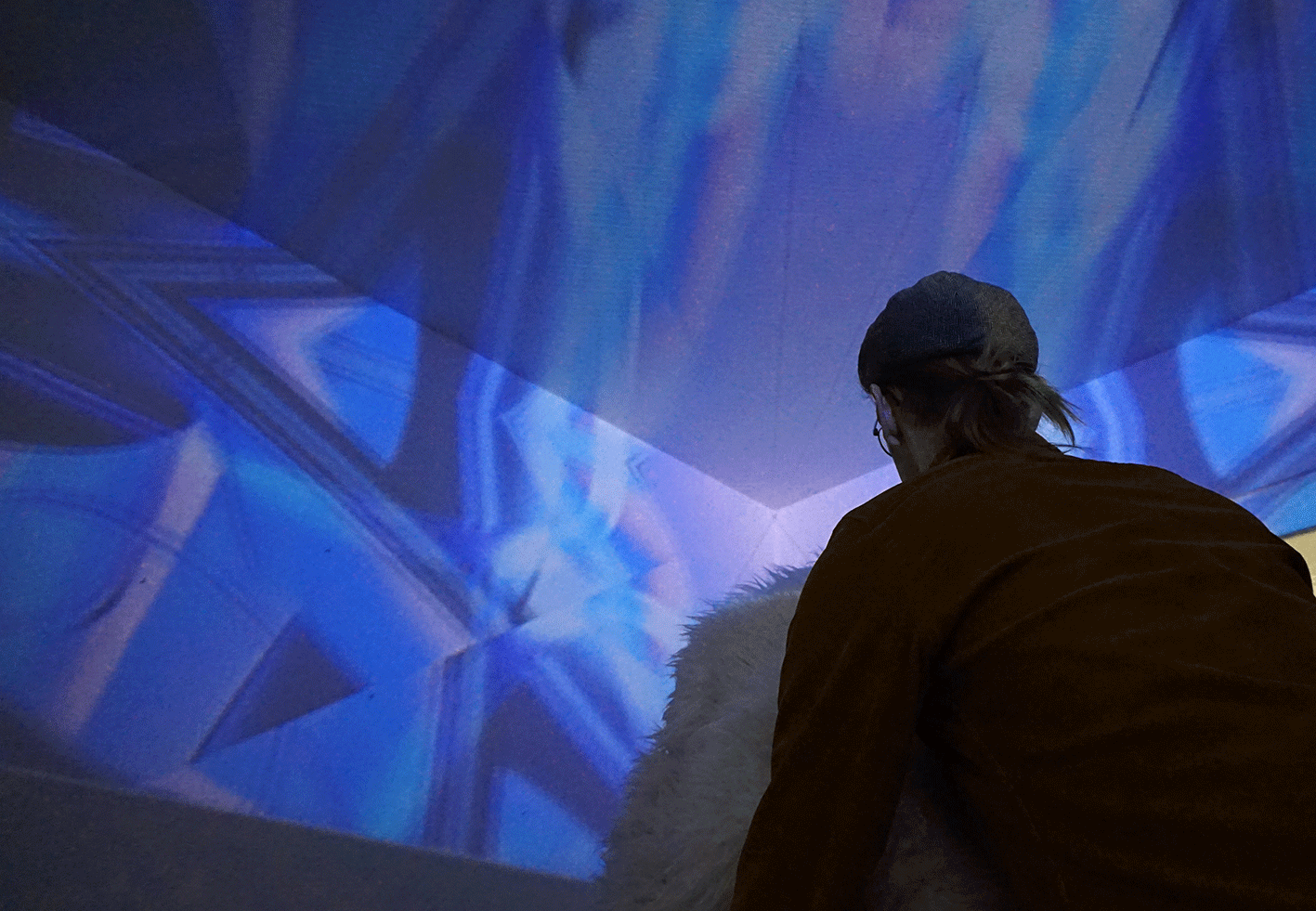
Analysis
The relations I wanted to identify were found by mapping out expressions and observations from the evaluation sessions relating to Interaction attributes and Pleasures. I color coded post-it notes according to what element of the artwork the expressions addressed; sounds, visuals, tactile elements, time and general thoughts or expressions that could be applied to all elements.

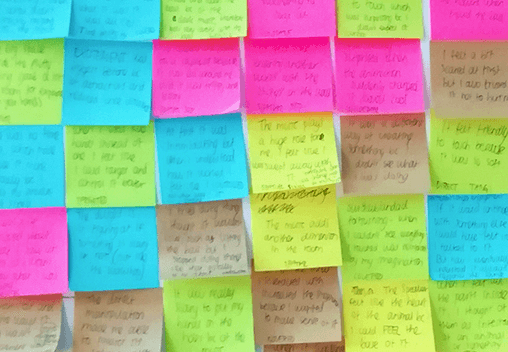
This resulted in an illustration that pinpoints where different Interaction attributes that affected the Pleasures existed within Solar. Furthermore, I analysed what significance time might have on the Pleasures experienced by applying two notions found in literature to that illustration. The first notion was that experiences with objects in different contexts could remind users of the interaction with an artwork which lets them partly re-experience the Pleasure they had with it. The second was that pleasure can be both a driving factor for, and an experiential output of, interaction. My analysis led to the idea of how the Pleasures could potentially be experienced in interactive art, in and outside of the actual interaction with it.
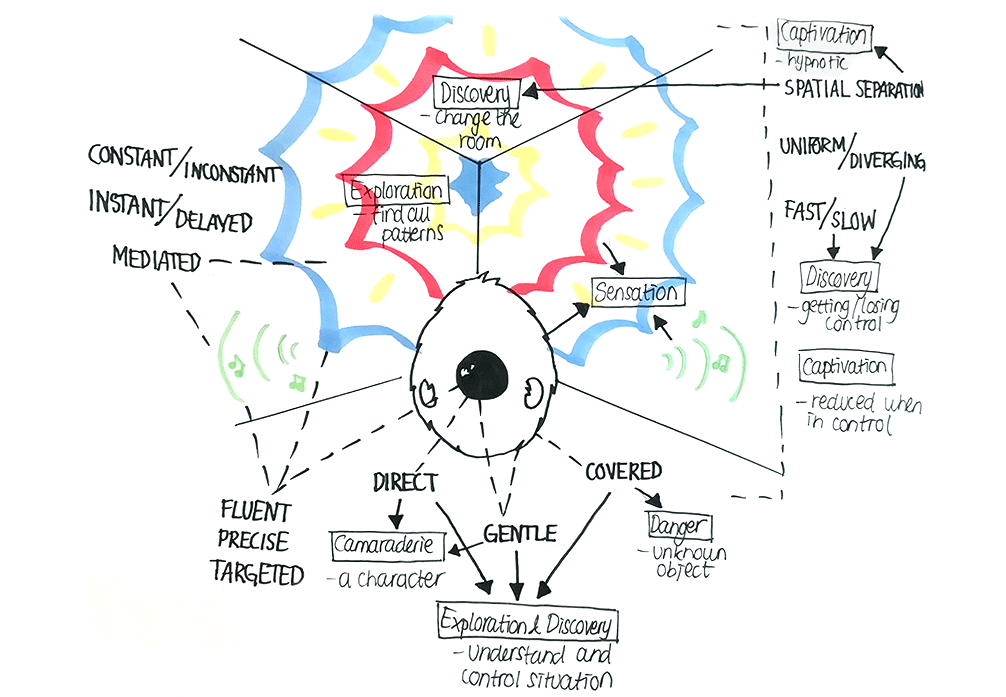
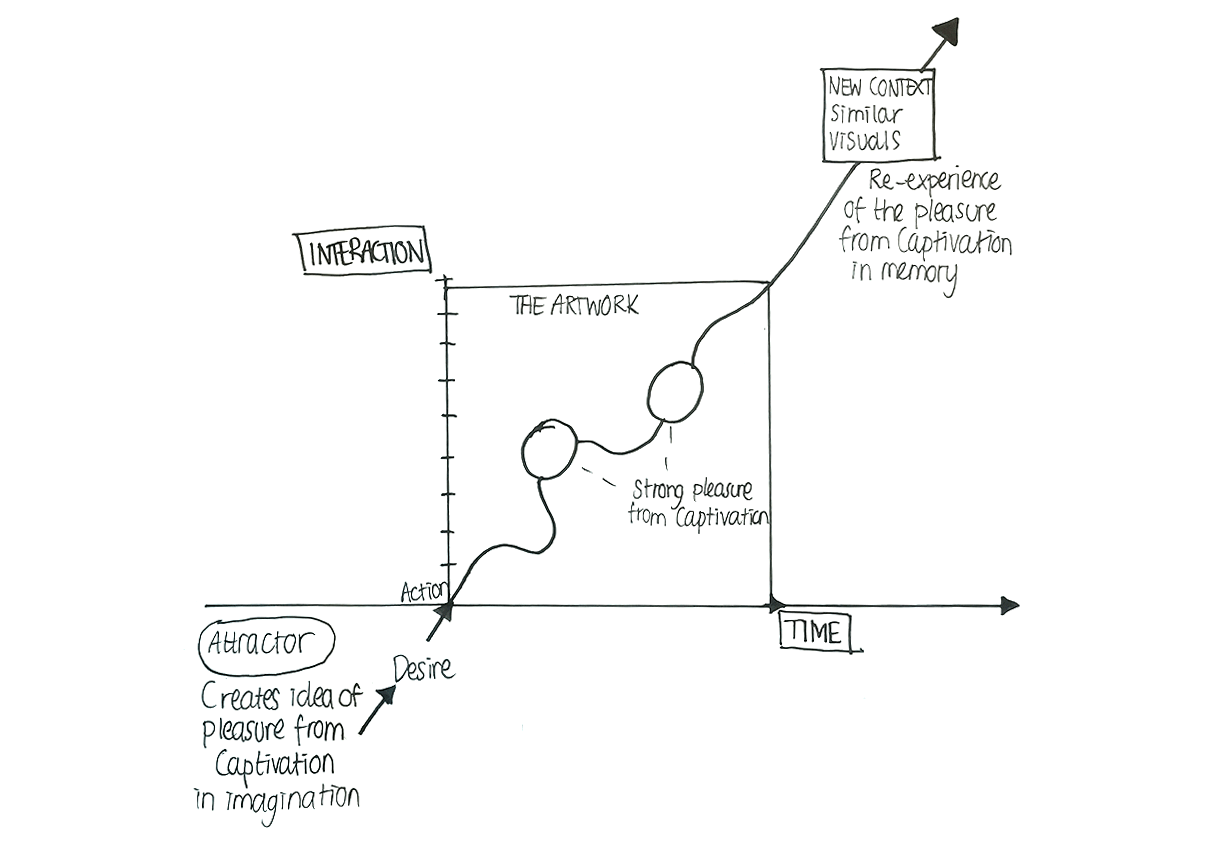
REFLECTION
The most significant insight I got from my degree project was that the simple solutions can be the most effective. By designing simple solutions, one saves time and effort and does not have to compensate on the end result as the experience can be just as good as with more complicated solutions. I also saw the weight of words when describing design. Once starting to unpack it, there is much to a single word, which has made me more aware of the importance of choosing the right words when communicating about design. I chose a difficult topic for writing a thesis as it is rather philosophical and abstract, which is why I am especially happy that I was persistant with pursuing it as I find the conclusions I made interesting for future work.
References
Costello, B. (2009). Play and the experience of interactive art (PhD
thesis).
University of Technology, Sydney.
Lenz, E., Diefenbach, S., & Hassenzahl, M. (2013, September). Exploring
relationships between interaction attributes and experience. In Proceedings
of the 6th International Conference on Designing Pleasurable Products
and Interfaces (p. 126-135). ACM.
